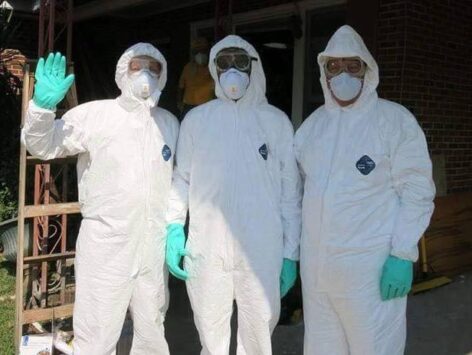Cleanup teams ensure homeowners have a safe, clean home after damage from a disaster. When homes are flooded, wind damaged, or affected by fire, teams clean up so homeowners will be ready to rebuild when the time comes.
Using best practices in chain saw, muckout, mold remediation, ash out, and temporary roof repair, cleanup volunteers get down and dirty to make sure homeowners don’t.
A Story from West Virginia
Here is Bonnie’s story from the 2016 West Virginia flood.
Why Clean Up?
Our vision in disaster response is:
Mobilizing volunteers to provide high quality services to meet human needs after disaster.
In Clean Up, we do this by:
- Meeting Human Needs After Disaster by preparing homes to be safe, dry, and warm
- Sharing a Good Word and a Good Deed
Clean Up comes in 4 parts:
- Flood Muckout
- Chain Saw
- Tarping/Temporary Roof Repair
- Ash Out
Each area requires a different knowledge base in order to complete the task. Most Clean Up units in our fleet contain equipment to perform all of these tasks.


